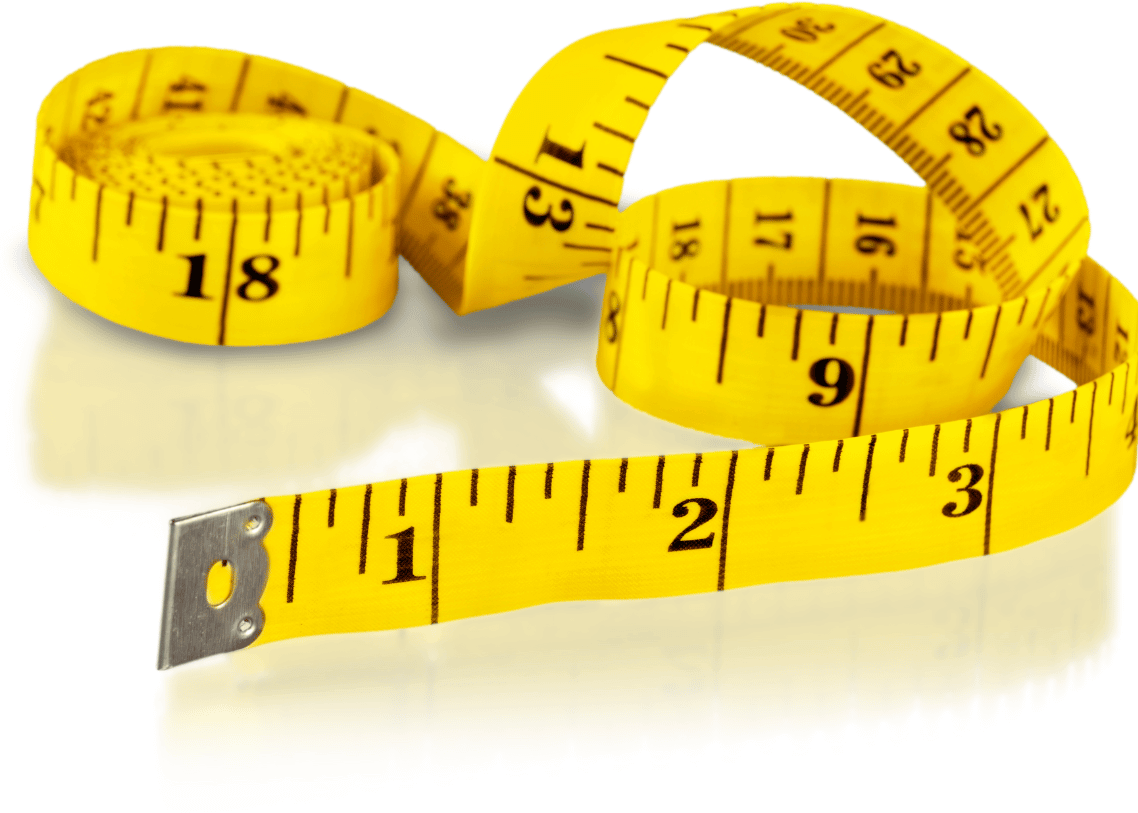How Do You Measure for Men’s Pants?
Key Takeaways:
- Accurate measurements are crucial for tailors and e-commerce sellers when measuring men’s pants. This ensures a proper fit and customer satisfaction.
- The three primary measurements for men’s pants are waist, hips, and inseam. These measurements help determine the overall fit and length of the pants.
- In addition to the primary measurements, other measurements to consider include calf width, hem width, thigh, knee, and calf circumference. These measurements further contribute to the overall fit and comfort of the pants.
How to Measure for Men’s Pants Correctly
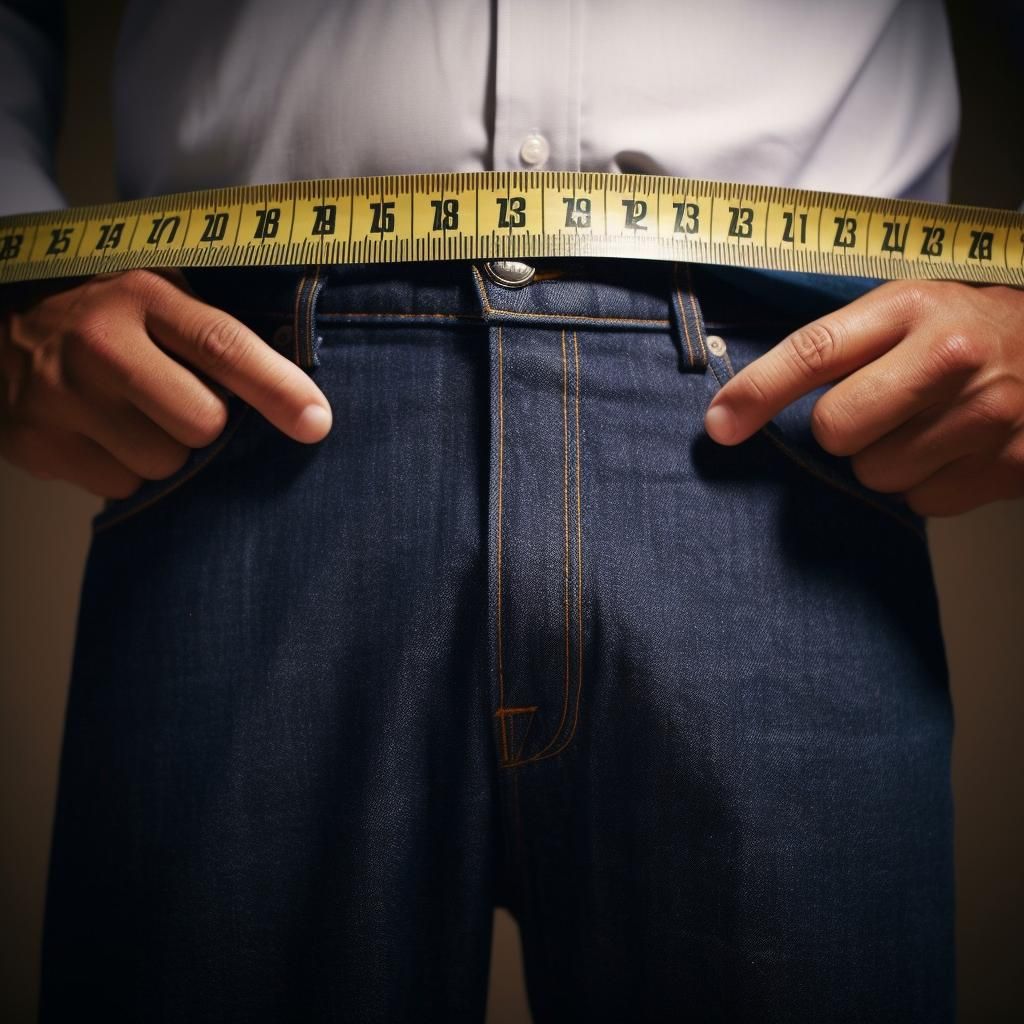
Photo Credits: Www.Moderngentlemanmagazine.Com by Ethan Brown
Accurately measuring for men’s pants is crucial whether you’re a tailor or an e-commerce seller. In this section, we’ll uncover the importance of precise measurements and the impact they have on the fit and comfort of the pants. We’ll also explore the three primary measurements: waist, hips, and inseam, as well as other measurements to consider for a truly tailored experience. Get ready to master the art of measuring for men’s pants with precision and confidence.
Importance of Accurate Measurements for Tailors and E-commerce Sellers
Accurate measurements are essential for tailors and e-commerce sellers. They need them to guarantee a proper fit for men’s pants. With precise measurements, tailors can make custom-fit pants that bring out the wearer’s body shape and look. E-commerce sellers use accurate measurements for size charts and helping customers make informed buying decisions. Without precise measurements, tailors and e-commerce sellers will have difficulty meeting customer expectations.
When measuring men’s pants, three measurements are important: waist, hips, and inseam. The waist measurement shows where the pants will sit. The hip measurement ensures a comfortable fit around the hips and thighs. The inseam is key for the leg length of the pants. These form the basis for creating well-fitting pants.
Other dimensions should also be taken into account when measuring men’s pants. Calf width, hem width, thigh circumference, knee circumference, and calf circumference are all needed for a comfortable and tailored fit. This enables tailors and e-commerce sellers to accommodate different body shapes and preferences.
Accurate measurements are particularly important for waist measurements. Different pant styles require different waist fits. For example, slim-fit trousers may have a smaller waist size compared to relaxed-fit jeans. So, correct waist measurements are essential to determine the right size and style of men’s pants.
To get accurate measurements at home, follow these tips:
- Use a flexible tape measure wrapped snugly but not too tightly around the body parts being measured.
- Measure the waist and inseam while wearing the type of pants you intend to buy or have tailored.
- Repeat the measurements multiple times to ensure accuracy.
Nowadays, there are plenty of resources and sizing solutions available. Sizefox offers a comprehensive sizing solution for e-commerce sellers. Brands like Dickies and UNIONBAY provide fit guides for men’s pants styles. Websites like WikiHow and Nimble Made have step-by-step guides for measuring men’s pants. Todd Shelton specializes in custom-fit pants.
Accurate measurements are necessary for tailors and e-commerce sellers to deliver well-fitting men’s pants. With precise measurements, they can meet customers’ expectations, increase comfort, and boost satisfaction. Understand the importance of accurate measurements and use available resources to find the perfect-fitting pants. Get accurate measurements now!
The Three Primary Measurements for Pants: Waist, Hips, and Inseam
Accurate measurements are necessary for tailors and e-commerce sellers when it comes to men’s pants. Waist, hips, and inseam must be taken into account.
- Waist: Measure around the whole waistline where the pants will sit. This is important for size.
- Hips: Measure around the widest part of the buttocks to ensure a good fit.
- Inseam: Measure from the crotch down to either the desired pant length or shoe top.
Other measurements can also influence pant fit, like calf width, hem width, thigh circumference, knee circumference, and calf circumference. Paying attention to these can ensure a comfortable fit.
When measuring pants at home, use a flexible tape, wear proper garments, stand up straight, and get consistent measurements. Size charts and style options from different brands can help find the perfect trousers that give you both comfort and style.
Measure waist, hips, and inseam with precision to find a well-fitting pair of pants. Don’t settle for ill-fitting trousers – follow techniques for a tailored fit.
Playing Pant-athlon? Measure calf width, hem width, thigh, knee, and calf circumference to get the perfect fit for each inch!
Other Measurements to Consider: Calf Width, Hem Width, Thigh, Knee, and Calf Circumference
When it comes to men’s pants, it’s important to consider extra measurements like calf width, hem width, thigh, knee, and calf circumference. These measurements help ensure the right fit and allow for customization. By taking into account these measurements along with waist, hips, and inseam, tailors and e-commerce sellers can offer accurate sizing for customers.
Creating a table is a great way to understand and compare the different measurements. It should include columns for calf width, hem width, thigh, knee, and calf circumference. By organizing this information in a table, it becomes easier to visualize the various measurements and their importance in finding the right fit.
Apart from waist size, hip size, and inseam length, it’s essential to consider calf width, hem width, thigh circumference, and knee measurement when selecting men’s pants. These measurements help determine how the pants will sit on the body and point out any alterations that may be necessary. Taking into account these details ensures the pants fit well and offer comfort and freedom of movement.
When measuring for men’s pants, waist and inseam are key to avoiding any unexpected surprises when you sit down.
How to Measure Waist and Inseam for Men’s Pants

Taking accurate measurements is crucial when it comes to finding the right fit for men’s pants. In this section, we will explore how to measure the waist and inseam for men’s pants. From understanding waist circumference and waist width measurements to determining the inseam for leg length, each sub-section will provide essential insights on obtaining precise measurements. Regardless of whether you prefer relaxed fit or slim fit styles, getting the correct waist measurements is essential. Get ready to discover expert tips for measuring at home and ensuring that your pants fit you perfectly.
Waist Circumference and Waist Width Measurements
Waist circumference and waist width are essential factors for men’s pants. They show the size and shape of the waist area, creating a comfy and good-looking fit. By measuring correctly, tailors and e-commerce sellers can make or suggest pants to fit individual body shapes.
To understand it better, let’s look at a table:
| Measurement | Description |
|---|---|
| Waist Circumference | Around the narrowest part of the torso, usually the belly button. Indicates the overall size. |
| Waist Width | Across the flat front panel at the waist level. Shows how wide/narrow the pants will be. |
The two measurements decide how well the pants fit. Waist circumference gives the size, while waist width shows if they’ll be loose or snug.
Different pants styles need different levels of accuracy. High-waisted pants must be measured precisely, while low-rise pants may need slightly less precise measurements because they are lower on the hips.
Inseam Measurement for Leg Length
To get the right leg length for men’s pants, the inseam measurement is key. That way, you can ensure a proper fit and avoid any discomfort or an odd look from pants that are too short or too long. To measure the inseam:
- Stand straight with your legs slightly apart.
- Use a measuring tape to measure from the crotch seam (where the pants meet in the middle) down to the bottom of one pant leg. Follow the contour of your inner leg.
- Write down this number – it’s your inseam measurement, or the desired leg length.
- Do this on both legs for accuracy, as there might be slight variations.
For different styles of pants, the inseam can vary. For instance, dress pants need a longer inseam than casual jeans or shorts. So consider the style and occasion when measuring.
Apart from waist and hip sizes, other measurements like calf width, hem width, thigh circumference, knee circumference, and calf circumference can help you find the right-fitting pants.
By understanding how to measure inseam and taking other measurements into account, you can pick pants that not only fit but also suit your style and comfort preferences.
Importance of Correct Waist Measurements for Different Pants Styles
Accurate waist measurements are key for getting the perfect fit for any pants style. Properly fitting pants add to comfort and give a neat, polished look. When taking waist measurements for different pants, it’s important to note variations in rise, such as low, mid, or high-rise. Knowing the right measurements helps pick the right size and fit for body shape. This ensures the pants sit comfortably on the hips, not too tight or too loose.
The importance of accurate waist measurements is especially seen in pants with belt loops or button closures. These pants can have different waistband placements, and precise measurements guarantee these elements are positioned correctly. For instance, it helps tailor-made pants fit perfectly on the waistline, or slightly below it for a modern look.
In addition to size, accurate waist measurements help people make informed choices on pants that suit their body shape and preferences. Measurements are compared with size charts, so people can choose from slim-fit, regular-fit, or relaxed-fit.
By understanding the significance of accurate waist measurements for different pants styles, folks can select trousers that flatter their physique, yet provide optimal comfort and style. Accurate measurements enable online shopping and help tailors make custom-made pants for an improved appearance and confidence boost.
Tips for Taking Accurate Measurements at Home
Accurate measurements are vital to get the right fit when buying men’s pants. Use these tips to measure yourself accurately, without a pro or a store visit.
- Use a flexible tape: Make sure it’s neither too loose nor too tight.
- Measure properly: Natural waistline is usually about an inch above the navel. From crotch seam to the bottom of the leg, is your inseam.
- Multiple measurements: Take more than one measurement for accuracy.
- Size charts: Check the size guides provided by brands or sellers.
Fabric shrinkage, style preferences, and other factors can influence pant-fit. Different styles and brands may also help you find the best fit for your body type.
So, when shopping online or tailoring pants, precise measurements at home are key. Follow the tips, consider all relevant factors, and select the perfect pair of pants! Don’t forget that length matters too!
Understanding Pant Length and Inseam
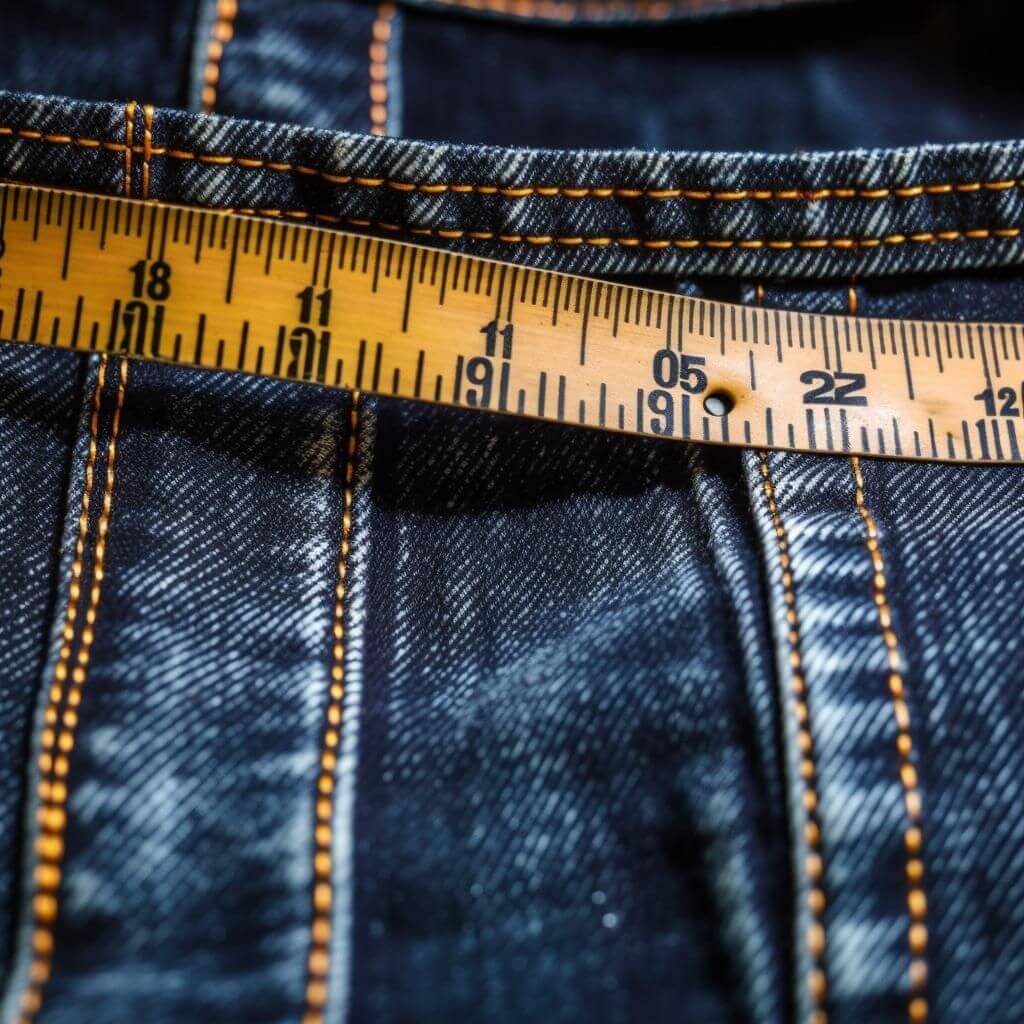
Photo Credits: Www.Moderngentlemanmagazine.Com by Dylan Torres
Understanding pant length and inseam is crucial for finding the perfect fit in men’s pants. In this section, we’ll explore the measurements involved in pant length and inseam, delve into the technique of measuring rise in pants, and discuss the significance of hem width measurement for achieving a proper fit. With these insights, you’ll be well-equipped to ensure that your pants fit comfortably and stylishly.
Pant Length and Inseam Measurements Explained
Pant length and inseam are key to getting the right fit. Inseam is the length of pants from crotch to bottom hem. It’s key to not be too short or too long.
To measure the length and inseam, first understand rise. Rise is the distance between waistband and crotch. By measuring the waist and inseam, you can determine the size and comfort.
Also consider hem width. This is the circumference at the pant leg opening. It affects how tight or loose the pants will be at the ankles.
To get the right fit and style, take accurate measurements of length, inseam, rise, and hem width. This is especially useful when shopping online or ordering tailored pants.
Finding the perfect rise? Balance comfort with not looking like Steve Urkel!
How to Measure Rise in Pants
Rise measurement in pants is the distance between the crotch area and the top of the waistband. This measurement is important as it affects comfort and fit. To measure rise accurately, here’s what to do:
- Place the pants flat, with the front up.
- Identify the crotch seam – where the two legs meet in the middle.
- Measure from this seam up to the top edge of the waistband.
- Measure along this vertical line for the right rise.
- Stay straight up, not at an angle.
Different pant styles come with variations in their design for how they sit on the waist. High-rise pants have a longer rise than low-rise or mid-rise options. Personal preferences for where you like your pants to sit can also influence the measurement.
Overall, accurate rise measurement helps ensure that your pants fit properly and provide optimal comfort.
Importance of Hem Width Measurement for Proper Fit
The measurement of hem width is ultra-important for a perfect fit for men’s pants. This is the circumference of the bottom of the pant leg. It’s vital for the pants to fall nicely and look balanced when worn.
Accuracy is critical for that fit. This measurement decides how wide or narrow the opening of the pant leg will be. If too wide, fabric may bunch at the ankles. If too narrow, movement and comfort will be restricted.
Different pant styles have different hem widths. Slim-fit or tapered pants usually have narrower hems for a stylish, modern look. Straight-leg or relaxed-fit pants have wider hems for a relaxed, comfy style. Consequently, it’s important to measure and adjust the hem width as desired.
Personal preference and body proportions also affect the choice of hem width. Some people prefer wider or narrower hems based on their style or shape. Also, shoe type and height can factor in.
For an exact measurement, measure both legs at various points along the pant leg opening and average out the measurements. This takes into account any leg length differences or stitching irregularities.
In summary, measurement of hem width is essential for a proper fit in men’s pants. Different pant styles demand different hem widths. Personal preference and body proportions come into play. For a precise measurement, measure both legs at multiple points and average out the measurements.
Tips for Finding the Right Size and Fit
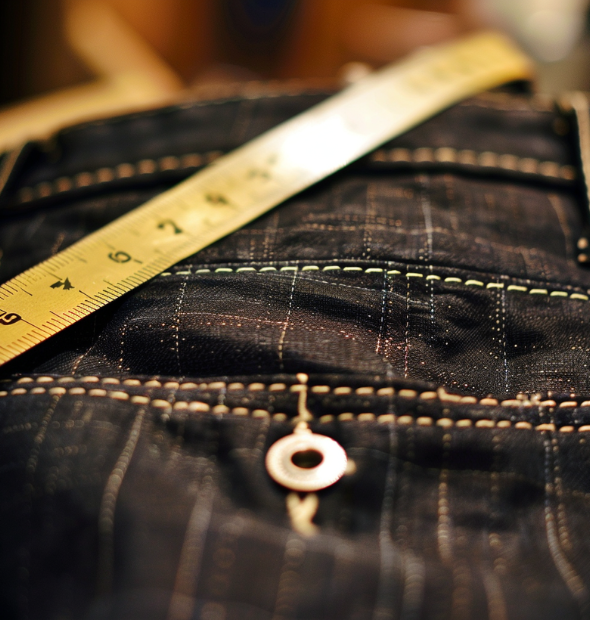
Photo Credits: Www.Moderngentlemanmagazine.Com by Andrew White
Finding the right size and fit for men’s pants can be a daunting task, but fret not! In this section, we’ll provide you with essential tips to ensure you end up with the perfect pair. From using body measurements to exploring size charts, multiplying flat measurements for accurate circumference, considering shrinkage and style factors, to trying various styles and brands, we’ve got you covered to help you look and feel your best in trousers.
Using Body Measurements for Size Charts
Body measurements are essential for creating accurate size charts for men’s pants. By having precise body measurements, fashion brands and e-commerce sellers can offer customers a better shopping experience. The measurements they should take into account are waist circumference, inseam length, and hip width.
Measuring waist circumference is done around the natural waistline. The inseam length is the distance from the crotch to the bottom of the pant leg. Lastly, hip width is measured at the widest part of the hips. By collecting these measurements, brands can create size charts that suit different body types and sizes.
Using body measurements ensures a more precise fit for different pant styles. It eliminates guesswork and helps customers make an informed decision when buying online or visiting a tailor. It also helps determine if a pant style will fit comfortably at the natural waistline or lower on the hips. In addition, other factors like calf width, hem width, thigh circumference, knee circumference, and calf circumference can be taken into account when making comprehensive size charts.
By using body measurements as a base for size charts, customers can get more accurate sizing information, enhancing their satisfaction. Moreover, with tech advancements such as virtual fitting rooms and AI-based sizing solutions, finding the perfect pair of pants based on one’s own body measurements is now easier.
Remember: measurements can be multiplied by 2 for circumferences. But don’t do that with pizza slices!
Multiplying Flat Measurements by 2 for Circumference
To measure the circumference of clothing, you must multiply the flat measurements by 2. This gives an accurate representation of the full circumference, taking into account things like ease and comfort. Doubling the flat measurements helps brands and retailers give customers garments that fit properly, without limiting movement.
Here’s a 5-step guide to multiplying flat measurements by 2 for circumference:
- Measure the desired area with a tape measure (e.g. waist or hips).
- Record the measurement, making sure the tape isn’t stretched or slack.
- Multiply this flat measurement by 2 to find the circumference.
- Double-check your calculations for accuracy.
- Use this final measurement as a reference when choosing a size from size charts.
Be aware that multiplying flat measurements by 2 can vary slightly, due to fabric stretchability or construction methods used. When looking at size charts from different brands or styles, consider these variations.
For precise fits or tailored clothing, it’s best to talk to professional tailors who can take into account unique body proportions and make custom pieces for you.
A useful tip: Nimble Made’s guide on measuring waist for pants states that doubling flat measurements for circumference is standard across many clothing brands and industries, to maintain consistent sizing (source: Nimble Made).
Remember, when buying pants, always factor in shrinkage and style – unless you want to end up with outdated, too-short capris!
Considering Shrinkage and Style When Buying Pants
When purchasing pants, shrinkage and style are essential to consider. Shrinkage is when the fabric may get smaller after washing, affecting the fit. Style refers to color, pattern, and cut.
- Check Fabric Care Instructions: Read the instructions from the manufacturer/retailer. These often mention if shrinkage is expected and how to reduce it.
- Pre-Shrunk Fabrics: Pre-shrunk fabrics are treated in manufacturing to stop further shrinking when washed.
- Size Up: If uncertain about shrinkage, choose a larger size than usual.
- Appropriate Styles: Different styles may shrink differently, due to variations in fabric and construction.
- Read Reviews and Seek Advice: To understand how pants may behave with shrinkage and style, read customer reviews or seek advice from knowledgeable professionals.
Also, when buying pants, take into account waist circumference, inseam length, and other factors. Dickies’ “Men’s Pants Fit Guide” provides information about different styles, fits, measurement tips, and more.
Trying Different Styles and Brands for the Best Fit
Discover the Perfect Fit:
- Experiment with different styles – slim-fit, straight-leg, and relaxed-fit. Find out which ones flatter your body type the most.
- Try different brands – each brand has its own sizing standards and fits. Find the one that suits you best.
- Consider fabric stretch – try different materials and fabrics to determine which ones provide the ideal combo of comfort and fit.
In addition to waist and inseam measurements, consider other dimensions like thigh width, calf width, hem width, knee circumference, and calf circumference. Everyone’s body is unique – try on various styles and brands to find the best fit for you!
Recommendations and Additional Resources
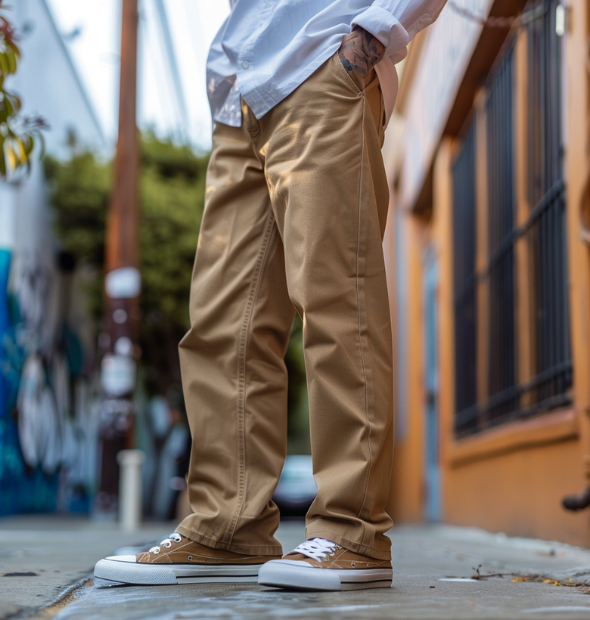
Discover valuable resources and recommendations to aid you in the challenging task of measuring for men’s pants. From Sizefox, a comprehensive sizing solution for e-commerce sellers, to brand-specific fit guides like Dickies and UNIONBAY, we’ve got you covered. Whether you’re looking for a step-by-step guide on measuring pants from WikiHow or insights on tailoring suit pants from Proper Cloth, this section offers a wealth of information. Explore expert advice from Nimble Made on measuring waist for pants and discover the world of custom fit options from Todd Shelton.
Sizefox: A Complete Sizing Solution for E-commerce Sellers
Sizefox – a game-changer for e-commerce sellers! It’s a comprehensive solution designed to address the challenges of finding accurate sizing for customers. With extensive data and tools, sellers can guarantee properly fitting pants. Plus, they can offer a personalized shopping experience.
Sizefox has a range of features to help sellers. Size charts based on body measurements, guidance on measuring waist circumference and inseam length, and tips on trying styles & brands. All allowing them to confidently guide customers towards the ideal fit.
This idea came from an industry need for reliable sizing solutions specific to online retail. As more people shop online, sizing accuracy is more important than ever, to prevent confusion and improve customer satisfaction. Sizefox was created to meet this need – precise sizing recommendations backed by extensive measurement data.
Dickies: Men’s Pants Fit Guide
Dickies offers a comprehensive guide on fitting men’s pants to ensure comfort. It provides key info and tips for waist and inseam measurements. Understanding pant length and rise is also important. Plus, extra measurements like calf width, hem width, thigh, knee, and calf circumference are important too!
Moreover, the guide includes recommendations for taking measurements at home. It teaches how to measure rise in pants, as well as understanding hem width for a proper fit.
Finally, Dickies, established in 1922, has a long history of crafting quality workwear. Its Men’s Pants Fit Guide is a trusted resource for finding trousers that fit individual body measurements.
UNIONBAY: A Brand for Various Men’s Pants Styles
UNIONBAY is a famous brand for its massive variety of men’s pants. They offer a range of options to suit different tastes and fashions.
- Variety: UNIONBAY offers a selection of men’s pants, like jeans, cargos, chinos, and joggers.
- Design: Their pants styles have a fashionable look, with attention to detail.
- Materials: UNIONBAY uses high-quality fabrics for durability and comfort.
- Fit: Pick slim-fit or relaxed-fit pants for any body type.
UNIONBAY meets the needs of men seeking stylish and comfortable pants. Their quality materials and details guarantee the perfect pair for any style.
Plus, tailored fit options make it easier to find flattering trousers. Whether you’re after relaxed jeans or formal chinos, UNIONBAY has something for everyone.
In short, UNIONBAY is a brand known for its wide selection of men’s pants styles. They provide versatility, stylish designs, quality materials, and tailored fits. With their commitment to the perfect fit and fashionable choices, they are an ideal option for those looking for stylish and comfy trousers.
Measuring men’s and women’s pants is essential for a proper fit. WikiHow provides a comprehensive guide for individuals to accurately measure their waist, hips, inseam and other important measurements. Follow these steps to find the perfect size and fit for your pants.
- Measure your waist circumference. Take a flexible tape measure and wrap it around your waist, where you usually wear your pants. Make sure the tape measure is snug but not too tight. Record the measurement in inches or centimeters.
- Determine your hip measurement. Wrap the tape measure around the fullest part of your hips. Make sure it is parallel to the ground. Note this measurement.
- Measure your inseam. Start at the top of your inner thigh and measure the distance down to the desired pant length. Follow the contours of your leg with the tape measure.
- Consider additional measurements. Depending on personal preference and style, take additional measurements such as calf width, hem width, thigh circumference, knee circumference and calf circumference. This will help tailor-made or online sellers provide an accurate fit for various pants styles.
- Use accurate measurements when shopping online. Refer to size charts from retailers or brands that match body measurements with corresponding sizes. Double-check your measurements before placing an order.
- Try different styles and brands. Each brand has slightly different sizing standards. Experiment with different styles and brands to find one that fits perfectly according to your body proportions.
When it comes to measuring men’s pants accurately, don’t forget unique details like rise measurement and hem width. These extra measurements will help ensure the perfect fit around the waist and other areas.
At Proper Cloth, precision is key when it comes to tailored suit pants and trousers. Don’t end up looking like a misplaced garden gnome!
Proper Cloth: Measuring Tailored Suit Pants and Trousers
Measuring tailored suit pants and trousers is essential for the perfect fit. Proper Cloth offers a guide on how to measure these garments precisely. Get your desired style and comfort by following their instructions!
Measure your waist: Wrap a tape measure around your natural waistline, above your hip bones and below your ribcage. Ensure it’s snug but not too tight. Record the number in inches or centimeters.
For hip measurement: Wrap it around the widest part of your hips and note the measurement.
Inseam measurement: Start at your crotch area and go down to mid-heel for dress pants or a bit shorter for casual ones.
Extra measurements: Calf width, hem width, thigh circumference, knee circumference, and calf circumference are recommended too.
Follow Proper Cloth’s detailed guide to get accurate measurements and order custom-made garments that fit you just right. Don’t miss out on their advice – it’s expert-level!
Nimble Made: Guide on Measuring Waist for Pants
Measuring the waist for pants is important. Nimble Made has a guide to help. By following it, one can get the right size. Here are 4 simple steps:
- Get a flexible measuring tape. Wrap it around the waist easily.
- Locate the natural waistline. Place two fingers horizontally above the hips. Use the navel as reference.
- Take the measurement. Wrap the tape around the natural waistline. Make sure it’s snug. Record the result.
- Double-check and repeat if needed. This ensures accuracy.
Nimble Made’s guide also suggests taking multiple measurements. This accounts for variations in bloating or weight. This way, one gets an accurate and comfortable fit when buying pants.
By following Nimble Made’s instructions, one can find the right size easily. This leads to a better shopping experience.
Todd Shelton: Specializing in Custom Fit Pants with Various Options
Todd Shelton specializes in personalized clothing solutions for men. They focus on custom fit pants with various options. They prioritize customization and accurate measurements for a tailored fit.
They understand the importance of precise waist and inseam for men’s pants. These measurements ensure a comfortable waistband and ideal leg length.
They provide clear explanations to help customers understand pant length and inseam. They also guide customers on measuring rise and hem width for an optimal fit.
In addition to customization and accurate measurements, Todd Shelton stands out for their commitment to quality and customer satisfaction. They encourage individuals to try different styles and brands until they find what works best for them.
Overall, Todd Shelton offers a superior shopping experience for men looking for perfectly fitting pants. They combine precise measurements, helpful resources, and high-quality products.
Some Facts About How Do You Measure for Men’s Pants?
- ✅ The three primary measurements for men’s pants are waist, hips, and inseam. (Source: Team Research)
- ✅ Waist circumference is measured at the narrowest point above the belly button. (Source: Team Research)
- ✅ Inseam is measured from the crotch seam to the bottom of the pants along the leg. (Source: Team Research)
- ✅ Front rise and back rise are measurements that determine the height of the waistband in the front and back. (Source: Team Research)
- ✅ It is recommended to try on pants before purchasing to ensure the right fit. (Source: Team Research)
FAQs about How Do You Measure For Men’S Pants?
How do you measure the waist for men’s pants?
To measure the waist for men’s pants, use a soft measuring tape and wrap it around the belly button area, below the ribs and above the hips. Make sure the tape is snug but not too tight. The measurement should be rounded up to the next even number if measured in centimeters. If a tape measure is not available, you can use the length of a well-fitting pair of pants, measured on the waistband, and multiply it by two to determine the suggested waistband size.
What is the inseam length for men’s pants?
The inseam length for men’s pants is measured from the highest point of the inner thigh down to the ankles, without shoes on. This measurement helps determine the length of the pant leg. It’s important to note that inseam lengths can vary depending on personal preference and style.
How do you measure the rise in men’s pants?
The rise in men’s pants refers to the length from the crotch seam to the top of the waistband. There are two measurements: front rise and back rise. For front rise, measure from the crotch seam to the top of the pants front waist. For back rise, measure from the crotch seam to the top of the waistband along the back seam. These measurements help ensure a proper fit and comfort for the wearer.
How do you measure the leg openings of men’s pants?
To measure the leg openings of men’s pants, lay the pants flat with the legs folded along the creases. Fold the top leg up over the waistband to expose the bottom of the crotch. Spread out and flatten the bottom pant leg. Measure across the bottom of the pant hem from one edge of the leg opening to the other. This measurement helps determine the width of the pant leg at the bottom.
What is the importance of measuring men’s pants for a proper fit?
Measuring men’s pants accurately is crucial for a proper fit and overall satisfaction with the garment. By taking specific measurements, such as waist, inseam, rise, and leg openings, individuals can find pants that flatter their body shape and provide comfort. Properly fitting pants can enhance the overall appearance and give a good first impression in various settings, such as work, formal events, or casual outings.
How do you convert measurements for men’s pants between inches and centimeters?
To convert measurements for men’s pants between inches and centimeters, you can use a conversion factor of 2.54. To convert inches to centimeters, multiply the inches measurement by 2.54. To convert centimeters to inches, divide the centimeter measurement by 2.54. This conversion allows for easy understanding and comparison of sizes across different measurement systems.

